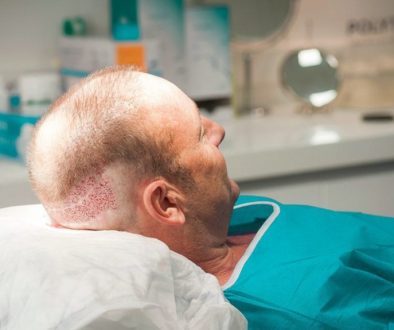Hair Transplant Risks – A Hair Restoration Surgeon’s Point of View
I’m not a glass half empty person but i just wondered what risks go along with hair transplant surgery before taking the plunge. Any advise would be great.
This question was posed by a hair loss sufferer on our hair restoration forum and answered by Dr. Michael Beehner of Saratoga Springs, NY who is one of our recommended hair restoration physicians. His professional answer is below.
 When reviewing the “negatives” regarding hair transplants, I usually touch on the following for the patient to know about:
When reviewing the “negatives” regarding hair transplants, I usually touch on the following for the patient to know about:
First of all, the general tone of my comments is that fortunately hair transplant surgery is a remarkably complication-free area of surgery. Much of this has to do with the rich blood supply of the scalp.
Here’s the list:
- 20% chance in males (probably 30-40% in females) of forehead swelling, which comes on the 3rd day after hair restoration surgery and is gone by the 6th day after. The more work done in front, especially if temples are included, the higher the incidence of this. Most hair restoration clinics give Prednisone or a steroid to decrease the incidence of this.
- Most important one of all: 5-15% chance of mild hair transplant “shock loss” to some of the existing native hairs. (Incidence is higher in females, probably near 30%). Most of these follicles affected by this will start to regrow in 3-4 months. Thinning hair or vulnerable ones may not return.
- Small cysts on scalp: These have become very, very rare in our own practice compared to 10 years ago, when they seemed much more common. They are usually caused by “piggybacking” of a graft on top of another, or a hair that grows inward and curls up.
- Very small area of numbness in the rear, central scalp, which happens in nearly 100% of patients and returns to normal in 3-8 months after surgery. This is caused by cutting some of the branches of the superficial sensory nerves when the donor cut is made. They grow back and full sensation almost always returns.
- Some soreness and discomfort in the donor scar area, especially when lying on a pillow. This is usually quite minimal, especially if sutures aren’t placed too tightly.
That’s about it in the real world today. Bleeding, infection, pitting, cobblestoning – these simply shouldn’t happen and are extremely rare in a good modern hair transplant practice.
Mike Beehner, M.D.
—
Bill
Associate Publisher
Technorati Tags: hair transplant, hair transplants, hair restoration, Thinning hair



